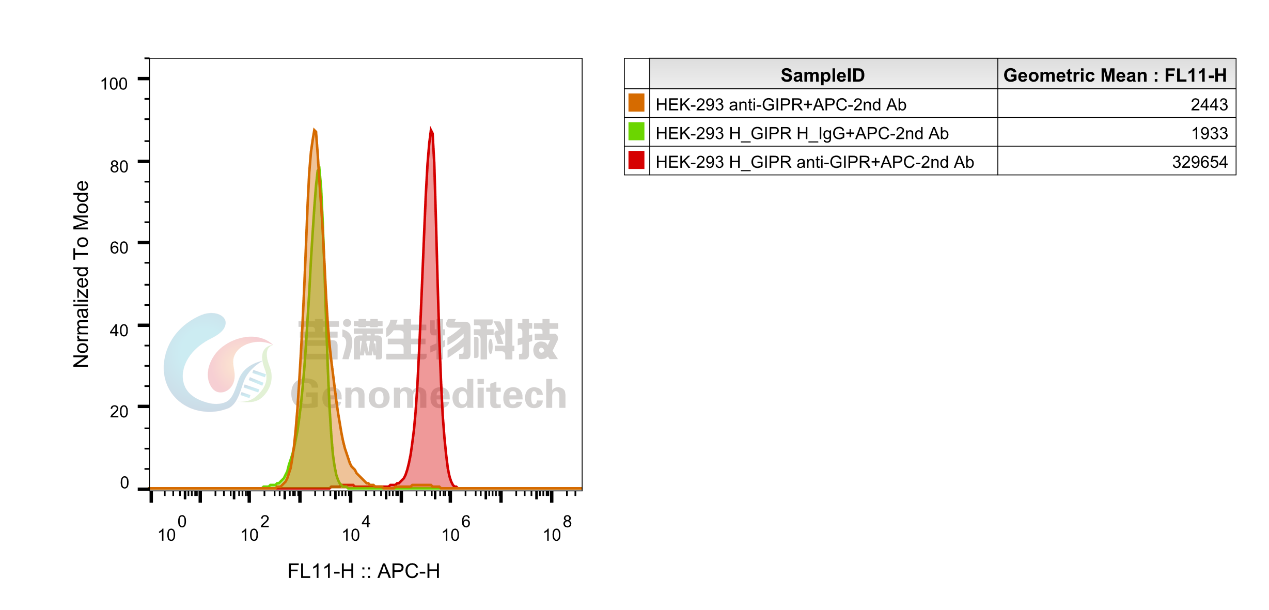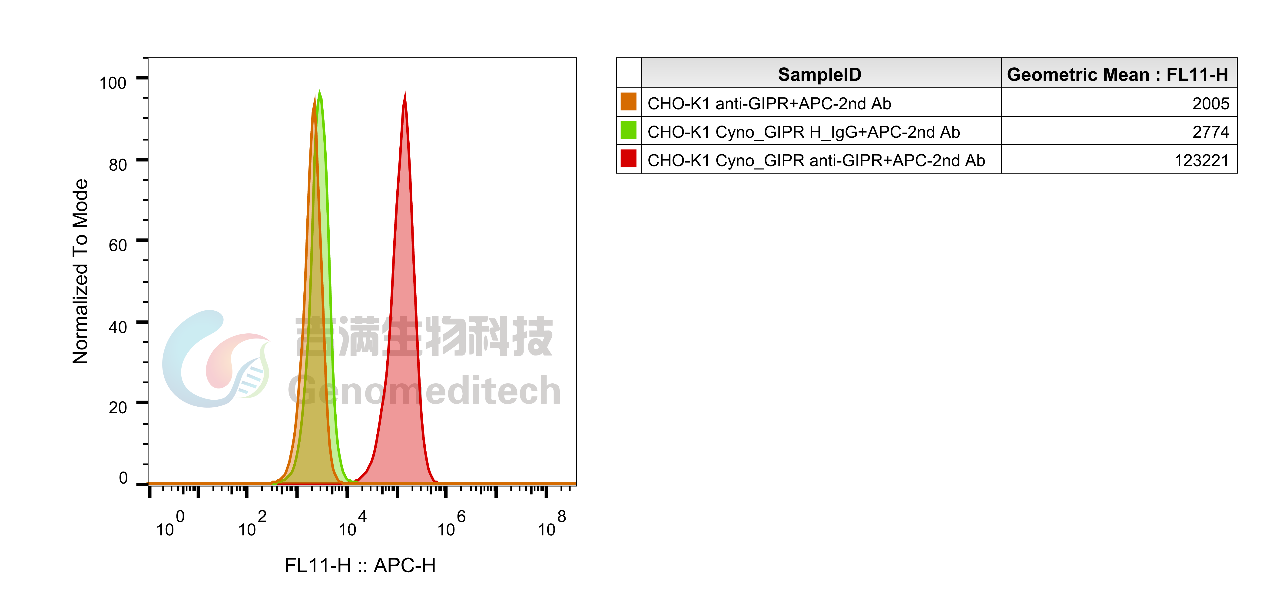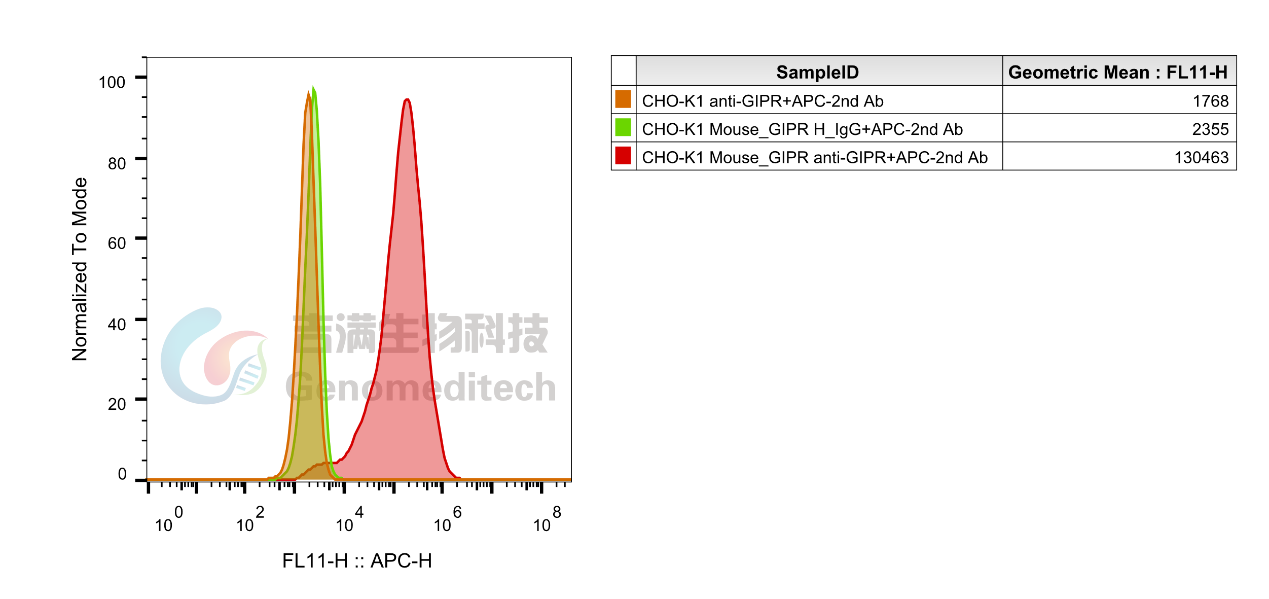Cat. No:GM-84915AB
Product:Anti-H_GIPR hIgG1 Antibody(AMG-133)
Cat. No:GM-84915AB
Product:Anti-H_GIPR hIgG1 Antibody(AMG-133)
GM-84915AB-10 10 μg
GM-84915AB-100 100 μg
GM-84915AB-1000 1mg
Species Reactivity Human; Cynomolgus; Mouse
Clone AMG-133
Source/Isotype Monoclonal human IgG1/κ
Application Flow cytometry
Specificity Detects GIPR
Gene GIPR
Other Names PGQTL2
Gene ID P48546(Human ); XM_005589605.3 (cynomolgus); Q0P543 (Mouse)
Background GIPR (glucose-dependent Insulinotropic Peptide Receptor) is a seven-transmembrane G-protein-coupled receptor involved in the regulation of insulin release and Glucose metabolism. Its structure includes transmembrane region and ligand binding region. Its functions include: insulin release regulation, blood glucose metabolism regulation. When activated, GIPR can activate G-protein-related signaling pathways, leading to the release and regulation of intracellular signaling molecules that ultimately affect insulin release. As a regulator of insulin release, GIPR has potential application in the field of diabetes treatment.
Storage Store at 2-8℃ short term (1-2 weeks).Store at ≤ -20℃ long term. Avoid repeated freeze-thaw.
Formulation Phosphate-buffered solution, pH 7.2.
Endotoxin < 1 EU/mg, determined by LAL gel clotting assay



Cat. No:GM-84915AB
Product:Anti-H_GIPR hIgG1 Antibody(AMG-133)
GM-84915AB-10 10 μg
GM-84915AB-100 100 μg
GM-84915AB-1000 1mg
Species Reactivity Human; Cynomolgus; Mouse
Clone AMG-133
Source/Isotype Monoclonal human IgG1/κ
Application Flow cytometry
Specificity Detects GIPR
Gene GIPR
Other Names PGQTL2
Gene ID P48546(Human ); XM_005589605.3 (cynomolgus); Q0P543 (Mouse)
Background GIPR (glucose-dependent Insulinotropic Peptide Receptor) is a seven-transmembrane G-protein-coupled receptor involved in the regulation of insulin release and Glucose metabolism. Its structure includes transmembrane region and ligand binding region. Its functions include: insulin release regulation, blood glucose metabolism regulation. When activated, GIPR can activate G-protein-related signaling pathways, leading to the release and regulation of intracellular signaling molecules that ultimately affect insulin release. As a regulator of insulin release, GIPR has potential application in the field of diabetes treatment.
Storage Store at 2-8℃ short term (1-2 weeks).Store at ≤ -20℃ long term. Avoid repeated freeze-thaw.
Formulation Phosphate-buffered solution, pH 7.2.
Endotoxin < 1 EU/mg, determined by LAL gel clotting assay


